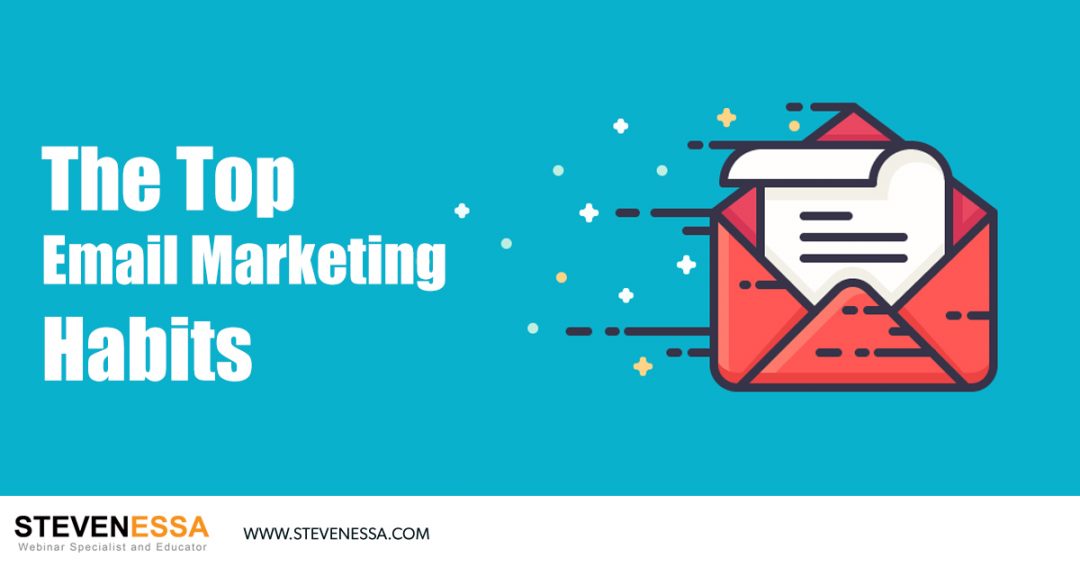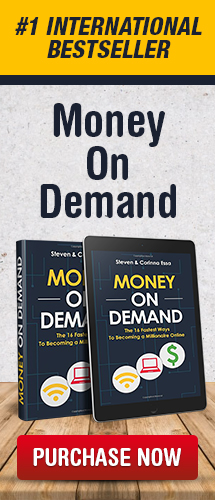Have you ever wondered why some people rave about email marketing and how much it helps their business, while others can’t seem to get anywhere near the same results?
In most cases, this comes down to your email marketing habits. Either you’re doing it right … or you’re not!
The good news is, we’ve put together some simple guidelines you can start using straight away. Here’s our 7 best email marketing habits:
1. Segmenting:
Segmenting allows you to separate your email subscribers into more relevant groups so you can market to them more specifically. For example, you could segment your subscribers into categories such as beginners, intermediate and experienced.
This then allows you to send each segment information that is most helpful for them. Think about it… if you have all three categories of subscribers in the one list, you’ll be trying to please everyone. Those with more experience may find your information too basic and unsubscribe. But if you were to try to please the more experienced, you would end up confusing those newer to the field.
However, if you segment your list and send them information that is just right for them, they’ll know that you understand them and their particular challenges and issues. This then increases the response rate you’ll get.
2. Testing Subject Lines:
It’s amazing the difference an email’s subject line can make!
Let’s look at these two subject lines as an example of a subject line for an offer that expires tomorrow:
- A) Your PRIVATE Invitation Expires Tomorrow Night!
- B) I have good news and bad news…
Which of those two subject lines do you think would work best?
Are you sure about that?
In one test subject line A out-performed the other. However, in another test, subject line B worked best. Why?
In that example, the tests were performed for different businesses marketing to different industries and what worked for one wasn’t necessarily going to work as well for someone else.
You can’t just guess or go with something you think sounds good. Testing is the ONLY way to know for sure which subject line is going to get you the best response for YOUR business.
3. Personalisation:
When you’re speaking with someone, doesn’t it feel nice when they refer to you by your name?
What about when you receive an email or a letter from a friend… are they likely to begin by addressing you by your name?
It’s just the same in business or when you’re trying to build rapport with your customers and potential customers. People like to know that you know their name, so it’s worth going to the effort of including their name in your emails, if you know it. (Good autoresponder programs can easily manage this for you.)
Where relevant, including other personalisation is also good, such as a person’s country or city of residence or referencing a product that they purchased from you or an event they attended. This is where having segmented your subscribers may be helpful too.
4. Mix Up Your Email Content:
Have you ever subscribed to someone’s list and then found that all they send you is email after email promoting the next best thing?
What did you do? Did you look forward to those emails and buy lots of those products they were selling you?
Probably not.
In fact, I’m guessing it came to the point where you either began deleting all their emails without even reading them or you even unsubscribed.
You need to make sure that you’re emailing a good mix of content – free information that is of value to your subscribers as well as your marketing emails. This free information will help to build trust, showing your subscribers that you care about helping them, not just making money.
5. Clear, Compelling Call To Action
Another important email marketing habit is to include a call to action (CTA) in every email. Not just any call to action, but a clear, compelling CTA.
We often assume that people will know what we want or expect them to do after reading our email. We mentioned our new product and included a link to it, so our readers will know to click on it, right?
Wrong!
Sure, some will. But it’s amazing the difference that it makes when you clearly and in no uncertain terms tell people what you would like them to do next.
For example:
Click the link below to register for our free online training.
Click here to read more.
Register now before all the tickets are sold out!
Download now.
Sign up for your free trial now.
6. Check Before Sending:
This is one of the best habits you can get into when it comes to email marketing, yet it’s one so many people don’t do… always check before you send!
- Proofread for spelling and grammatical errors.
- Check all links to make sure they’re working and going to the correct page.
- Check who you’re sending your email to and when.
- Send a test email to yourself to make sure everything looks good when it’s received.
This one habit will put you ahead of many of your competitors who don’t do this.
7. Clean Your Database:
This is another habit that is missed by the average email marketer, but one that the best email marketers do regularly.
Over time, people may lose interest in what they subscribed to learn from you or they may change their email address but not update it with you.
The problem is that the deliverability of your emails – that is, the likelihood of them reaching your subscribers’ inboxes – is reflected by the quality of your list.
So if you have a lot of emails that are bouncing, being rejected as potential spam, or just not being opened and read by your subscribers, this will eventually cause more and more of your emails to be blocked or sent to spam folders in error.
Therefore, it’s important to keep your database “clean” by removing subscribers whose email addresses are bouncing or inactive, along with those who aren’t opening your emails anymore.
I know what you’re probably thinking now…
“But I put so much effort into building a big list. Now you want me to delete subscribers? I can’t do that!”
Let me put it this way… what would you prefer? A big list of subscribers where only a handful are interested in hearing from you, but many of the emails you send them don’t reach them anyway?
Or a smaller list of subscribers who are keen to hear from you and read every word in every email you send them? Well, perhaps not every word, but you get the idea.
Most good autoresponder programs will have ways to make it easy for you to clean your database so if you’re not sure how to do this, reach out to your autoresponder’s support team for guidance.
When you first begin implementing these email marketing habits you may find it difficult to remember everything. So make a checklist of the 7 suggestions above and start applying them from the very next email you send.
Before long, you’ll find that these suggestions have become habits and you’ll be doing them automatically, without even thinking about it! Best of all, you will start to see better results from your email marketing by applying these best email marketing habits.


